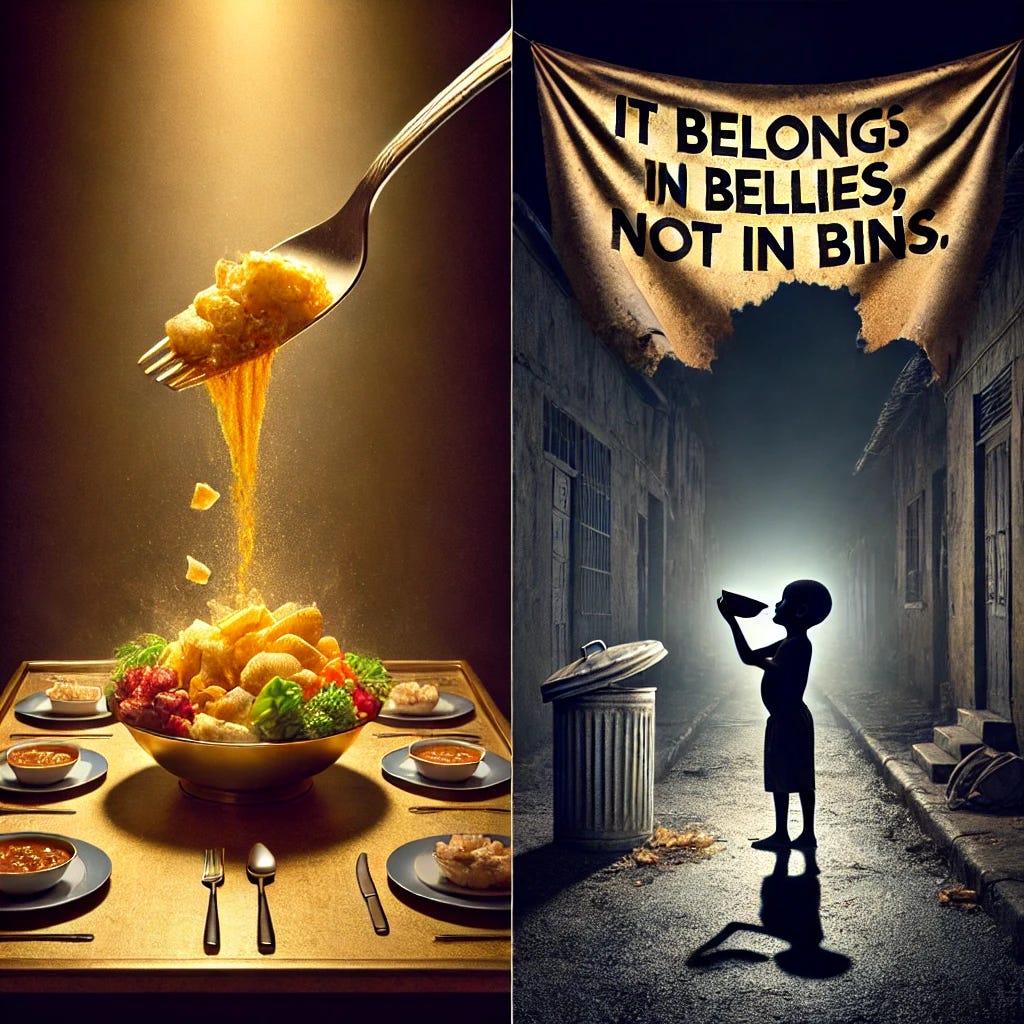Step behind the scenes of any major grocery store, and you’ll find a jarring sight—towering bins of perfectly edible meat, produce, and dairy getting crushed in massive trash compactors. Just yards away, pallets of new food are being wheeled in through the receiving bay, fresh from farms, greenhouses, and processing plants.
At the front of the store, customers wince at $9 packs of chicken, $7 cauliflowers, and apples priced like luxuries. Many quietly pass them by, and those items sit… and sit… until they rot on the shelf and join the others in the compactor.
This isn’t just waste—it’s failure.
It’s the failure of a system that’s out of sync with real people’s needs. And worse, it’s the waste of thousands of litres of water, fossil fuels, labour hours, packaging materials, and transportation energy that went into producing that food in the first place. It deserves better. We deserve better.
The Food-Waste Paradox: High Prices, Low Access, More Waste
High food prices are often justified as a reflection of supply chain challenges, inflation, and increased production costs. But they also create a vicious cycle:
Fewer people buy expensive food, especially perishables.
Unbought food spoils, and stores toss it.
Lost inventory leads to higher prices to recoup costs.
Repeat.
All while nearly 60%¹ of food produced in Canada is wasted, and millions of people are food insecure. It’s not just inefficient—it’s inhumane.
Smarter Pricing, Smarter Systems: How to Break the Cycle
So, what’s the solution? We need to align price, shelf life, and real demand. Here are some of the most promising and practical ways to get there:
🧠 Dynamic Pricing for Perishables
If bread goes stale in 2 days, why not cut its price every 12 hours? Software now exists to adjust pricing based on freshness—encouraging earlier purchases and reducing waste.
Example: A pack of strawberries at $5 on Monday could drop to $2.50 by Wednesday, giving budget-conscious shoppers a chance while keeping that food out of the landfill.
🤝 Better Partnerships with Food Rescue Organizations
Instead of waiting for produce to rot, stores can partner with local food banks, shelters, and community fridges for near-expiry items.
Food that’s still safe and delicious goes straight to the people who need it—not into the compactor.
📊 Data-Driven Ordering
Grocery chains can use AI and sales analytics to stop over-ordering. Predictive models help stock just enough, reducing excess inventory without risking empty shelves.
🛒 Community Discount Hours
Grocery stores can designate "Fresh Rescue Hours"—where the public can access deep discounts on items nearing expiry.
It’s better to sell that salmon fillet for $3 than to throw it out.
🌱 Government Support for Anti-Waste Programs
Let’s incentivize grocery stores to do the right thing. Governments can offer:
Tax breaks for donated food
Grants for waste-reduction tech
Penalties for excessive food waste in large chains
A Better System is Possible
We pour too much energy, time, and care into producing food for it to end up in a dumpster. We’re not just wasting food—we’re wasting potential, and dignity. A smart, compassionate food system should get groceries into people’s fridges, not into landfill.
If we align pricing with real-world consumption, and reward grocery stores for minimizing waste rather than hiding it, we can fix this.
Let’s stop treating food as disposable. Because it isn’t.
It belongs in bellies, not in bins.
¹ Source: The Avoidable Crisis of Food Waste (2019), Second Harvest and Value Chain Management International. The report found that 58% of all food produced in Canada is lost or wasted, with approximately 32% of that waste being avoidable—meaning the food was still edible at the time it was discarded.















Share this post